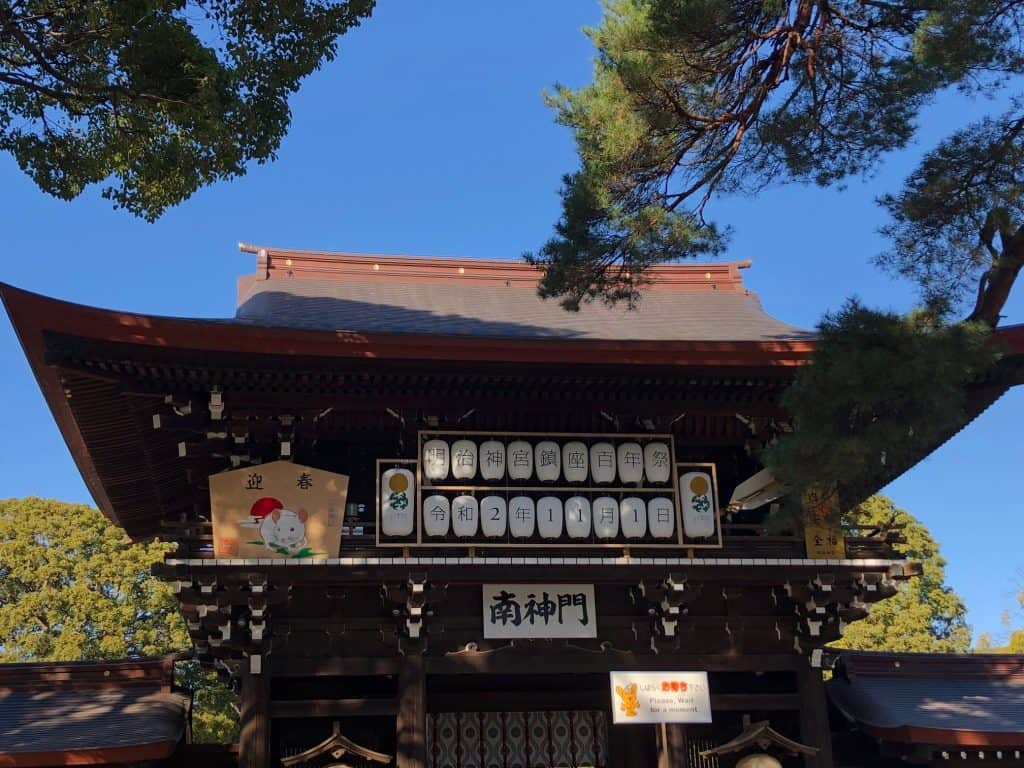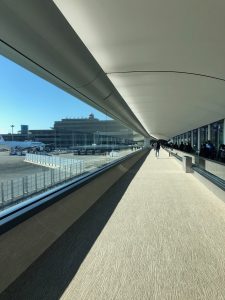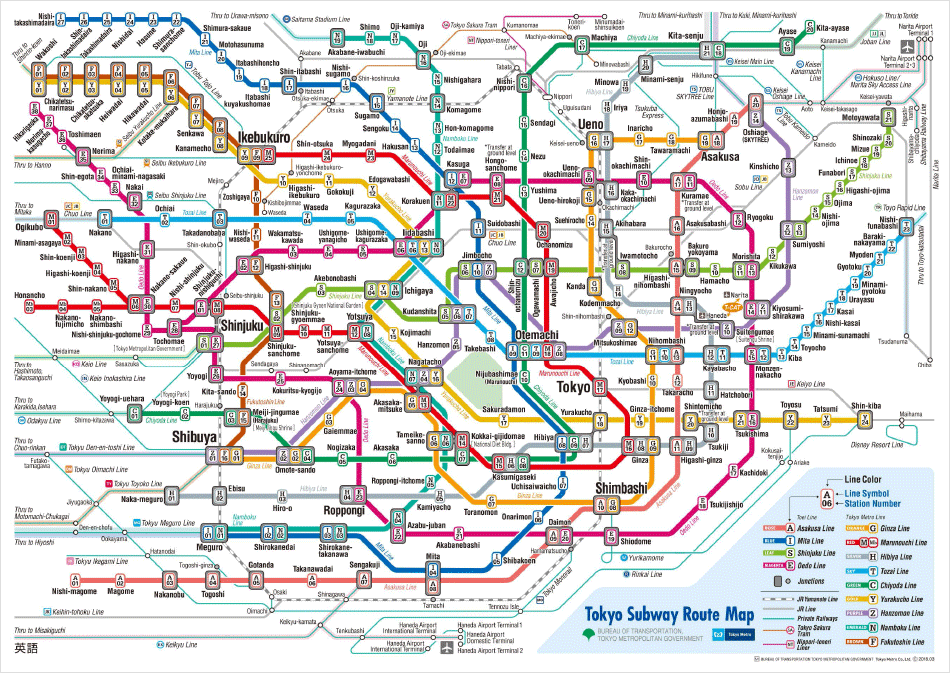15 Essential travel tips to know before leaving the airport
Japan’s tourism is booming. Since 2012 the country has experienced an off the charts rise of tourists visiting each year. According to the United Nations World Tourism Organization (UNWTO), about 28.7 million tourists visited Japan in 2017. In 2012 this number was barely 8 million. The UNWTO considers any overnight stay by foreigners a tourist visit.
In 2021 this trend will surely be kept as Tokyo is the next Olympic Games host and the main entrance to other famous Japanese destinations, like Kyoto and Osaka. Having that in mind and considering prices always increase in cities that host global events, we decided to head to Tokyo in the New Year for an 8-day vacation. Needless to say, it was intense and certainly unforgettable.
So, what we wish we knew before going to Japan for the first time and, more so, going in the New Year?
The answer is: a lot!
Having that question in mind, here are 15 tips about what every traveler to Japan should know before getting there. This is the first part of a series of posts about the coolest country in the world. The second part is on Japanese food and restaurants.

1. Review your manners
Japan is a blend of innovation and tradition, past and future together, and this generates situations somewhat curious or intriguing for visitors. Bear in mind that Japanese people are shy, gentle, speak low and respect the rules. Some nationalities, on the other hand, go on the other way. So the first tip: don’t be an ogre. Watch your manners and respect the local culture. You will find out that going along the Japanese flow is liberating and unstressful. The hard part is going back to the fuzz of everyday life after getting used to being polite, patient and silent.
2. Tokyo has two airports: Narita and Haneda

The main airport for international travelers in Japan is Narita and it is not in Tokyo, but in Chiba. Narita Airport is nearly 70km from the city center (aka, Tokyo Station) and is located in the Northeast area. Haneda, on the other hand, is the main airport for domestic travelers although it welcomes international travelers too (mostly from Asian countries but not limited to them). It is much closer to the city center – only 20km in the Southern area.
3. Cash is still mandatory in certain situations
This shocks a few people when building their Japan itinerary for the first time but it is true: you may not be able to pay with a credit card (or mobile) in some situations, like when having street food, eating out at some restaurants (!!!) or buying something from street vendors (for example, in the temples’ markets). So to have some Yen cash, we suggest you bring money in your currency and exchange it when in Japan or withdraw some cash in ATMs. Besides, remember that you will need cash to buy your Suica/Pasmo card before leaving the airport (see point 10).
*** Cost *** Some ATMs charge nothing, some might charge up to 7-8€.
4. Exchange rates are better in the airport
If you decide to get Yen in cash by exchanging your currency, we noticed the rates at the airport were fairly better than the ones in downtown Tokyo. So, if you want to exchange cash, do it upon your arrival.
5. Bring a Yen-filled card
It obviously depends on your bank, but using a credit card from a European major bank means you will nearly get ripped off when withdrawing Yenes in an ATM in Japan or when paying with a credit card. So we were determined to spend less with banks commissions and because of that, we exchanged Euros for Yenes in our Revolut debit card. With Revolut the exchange rate is excellent. In major banks, the rates plus commissions make you lose money when traveling to another continent. In Revolut we exchanged Euros for Yenes before arriving in Japan for an excellent exchange rate (one or two cents different from the official rate).
So the next step when we arrived in Japan was to withdraw Yenes at the airport’s ATM. The withdrawal of 20,000 was not free – it cost us 220¥ (less than 2€). Besides using Revolut to withdraw Yenes, you can, of course, pay with it in shops, restaurants, and attractions. We were very satisfied with the acceptance of Revolut in Japan. We had no problem at all with it.
*** Cost *** Withdrawing 20,000Y with Revolut cost us 220Y.
6. Buy a SIM card at the airport
If you are traveling on a budget, you will be able to save in some items but don’t try to save with Internet data. It is extremely necessary to have a good connection in Japan at least to use Google Maps (and you will use it A LOT). You’d better not rely on free wi-fi as, apart from the hotels, it is generally low-speed or require you to fill in a form with your data to grant you access.
There are many SIM card vendors at the airport, some in vending machines. In our case, we preferred to buy it on a counter with a sales rep to solve doubts and change the SIM in our mobile.
*** Cost *** There are various prices. We paid 4,980Y (41€) for an unlimited data card for 8 days (with no calls, which are frankly unnecessary).
7. Google Maps is not very accurate
You will need Google Maps to know how to leave the airport and, later on, to get to every single place you wish to visit. Google Maps will tell you about the best transportation options and combinations. However, take into account that the direction-guiding on the streets is not really accurate. Besides, it may calculate you’ll take, for example, 30 minutes to get somewhere but it’ll take you at least 40-45 minutes.
8. Tokyo subway is complicated

If you see the Tokyo subway map, you may even get anxious. It seems there are too many lines, stations, names, numbers and symbols on it. The thing is that there is not only one company serving the system, but two: Tokyo Metro and Toei Line. However, you will probably add another company to your means of transportation in Tokyo: the JR lines. They are part of the train system, but you will see the subway and train (and buses) altogether and will very likely jump from one to another all the time.
9. Is getting around expensive in Japan? It depends.
In Japan, the subway or train costs are not fixed but they vary according to the distance. So you never know in advance how much will pay for a ride. Consider that a short ride (also in buses) might cost from 130-270Y.
*** Cost *** We spent around 1,000Y (8.2€) per day and person in transportation (including coming and going to the airport).
10. Fortunately, there is Suica to simplify getting around
With all the complexity of the transportation system, it is really amazing that the Japanese came up with Suica and Pasmo cards. You charge them with up to 20,000Y and use it to pay metro, train, bus or in small shops. They are by far the best way to pay for moving around without getting crazy.
We used Suica and got it in the JR machine at the airport. Until a few months ago it used to charge a 500Y-deposit but it’s not like that anymore (for travelers). So Suica is completely free now. A flip side from these cards is that you cannot benefit from the day-passes that subway companies might have. You will always pay full-rate. Besides, the credit you have within Suica will not be returned. So you should use it up or lose the remaining credit (the good news is that you can buy from the vending machines in the airport gates area with them).
*** Cost *** Suica and Pasmo cards are free to get.
A sum-up of our Japan experience on our YouTube channel
11. Keisei is the cheapest train to leave the airport
So there you are. You already have some cash, already have data to connect to the internet, bought a Suica or Pasmo card, so what else? Now you need to find the right train to reach Tokyo. If you are in Narita airport, get the Keisei train, which is much cheaper than the other options. And yes, you can pay that with your Suica/Pasmo card. The trip from Narita Airport to a central area in Tokyo takes nearly 1h40 hours.
*** Cost *** The Keisei ticket from Narita to central Tokyo cost us around 1,500Y (12€) per person. It’s the cheapest option.
12. Narita Express cannot be paid with Suica
Another train used to get to Tokyo is Narita Express but this one does not accept Suica/Pasmo.
13. Don’t speak on trains or buses
Silence, please. Typically, people keep their mouth shut inside public transportation in Japan. So, answering your mobile, discussing with your partner or listening to loud music is completely inappropriate. Besides, trains in Japan must have a good sound-proof system because you can hear anyone whisper meters away. So, go with the flow and keep quiet.
14. Trains and buses do not run all night
Trains stop around 11 pm-1 am. So if you are planning a night out, think well in advance as you may not have a way to go back to the hotel. In our case, we were at a walking distance from Shibuya, our favorite place to stay late at night, so we walked home. On New Year’s Eve, trains work all night but are beyond crowded.
15. Taxis are expensive
If you have some limitations on your budget, leave taxis for the last option as they are the most expensive. Anywhere close we needed to go while in Tokyo, like 3km away, cost us at least 3.000Y (25€) always.
FAQs about what to know before going to Japan:
What do I need to know about Japan even before leaving the airport?
Six essential tips to go to Japan and truly enjoy the country are:
1. Reboot your manners. Japanese people follow the rules and misbehaving disrupts their mindset.
2. Most Japanese you will meet, struggle with English but try to help you the most they can.
3. Japanese make lines for everything and do not break them. Don’t be that person that tries to skip the line.
4. Metro, subway and train systems are complicated. You will need Google Maps (or similar) to know the best routes quickly.
5. You can pay with a credit card but you will need cash in a few situations, like street markets or vending machines.
6. Don’t rely on free wi-fi to have Internet connection. Get a SIM card with enough data to, at least, move around and orientate yourself.
Is it better to fly to Haneda or Narita when going to Japan?
Haneda is much closer to Tokyo city center but it is more used as a domestic airport although it serves some international flights. Narita is actually in Chiba city and is more used as an international airport. If you can choose, then Haneda is the best option.
What is the cheapest way of leaving Narita airport?
There are a number of options from Narita airport to Tokyo, and the cheapest one is the Keisei train and later on change to a metro line. The ride from Narita to Shibuya Station, for example, costs around 1,500Y while Narita Express costs around 3,000Y.
Do I need cash in Japan?
Sure. Cards are being increasingly accepted but there are still some situations that are cash-only, like for example buying street food, shopping in street markets and purchasing in small shops.